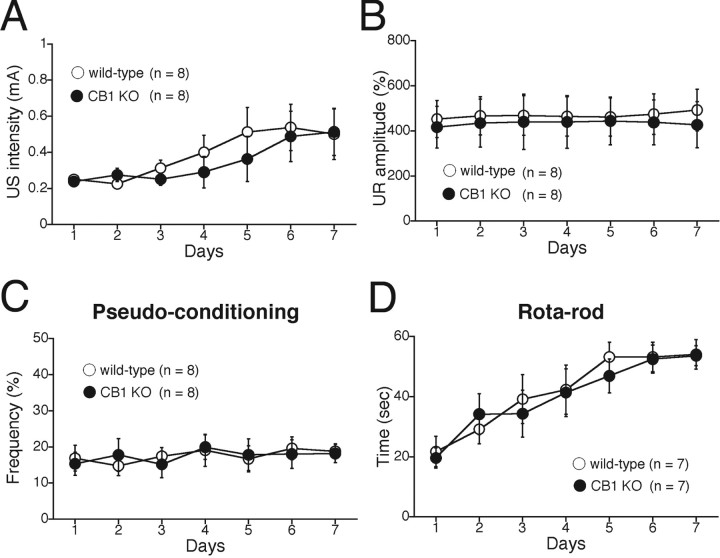Figure 2.
Normal sensitivity to stimuli and normal motor coordination in CB1 knock-out mice. A, The minimum US intensity (milliamperes) required for eliciting a UR in delay eyeblink conditioning. No difference was observed between wild-type (n = 8) and CB1 knock-out (KO) (n = 8) mice. B, Averaged UR amplitudes for wild-type (n = 8) and CB1 knock-out (n = 8) mice during delay eyeblink conditioning. In both genotypic groups, the UR amplitudes were nearly constant throughout the 7 d acquisition phase. No difference was observed between wild-type and CB1 knock-out mice. C, The eyeblink frequency during the pseudoconditioning did not increase in either wild-type mice (n = 8) or CB1 knock-out mice (n = 8). The CS and US were pseudorandomly presented with an interstimulus interval ranging from 0 to 20 s. D, Rotarod test. The stay time (seconds) of the mice on a rotating rod (25 rpm) is plotted versus the training day. There was no significant difference between wild-type (n = 7) and CB1 knock-out (n = 7) mice. Experiments were performed with CB1 knock-out mice and their wild-type littermates at 10–18 weeks of age.

